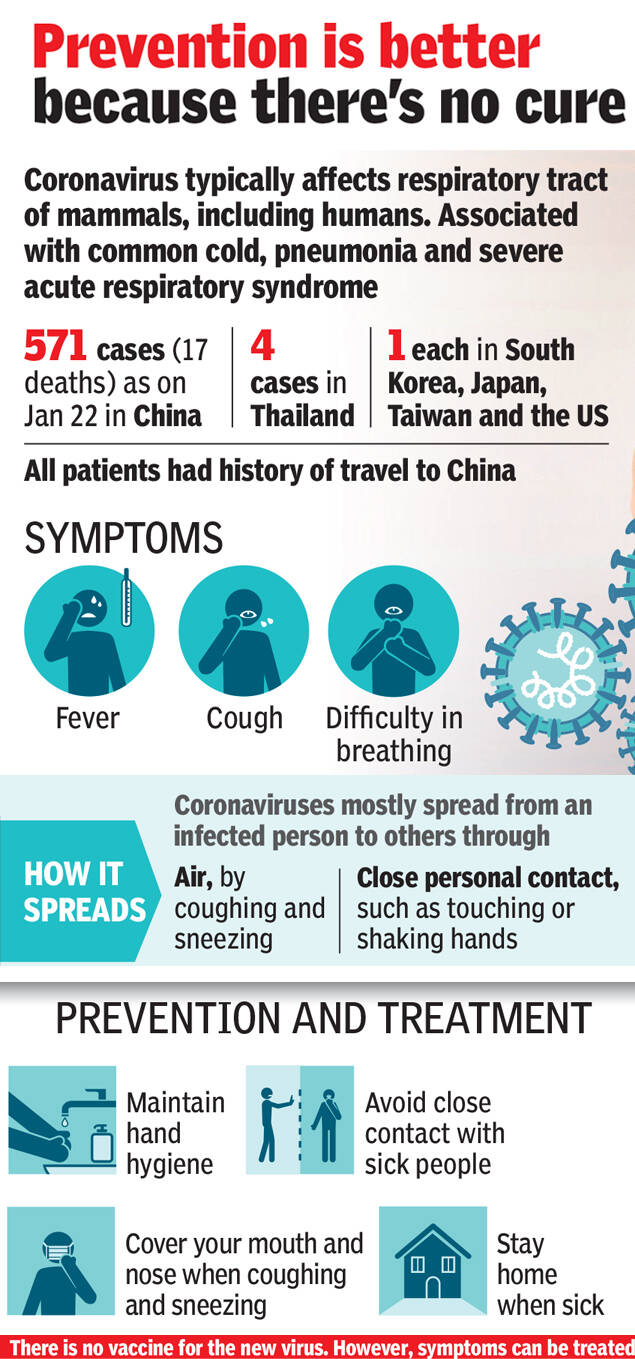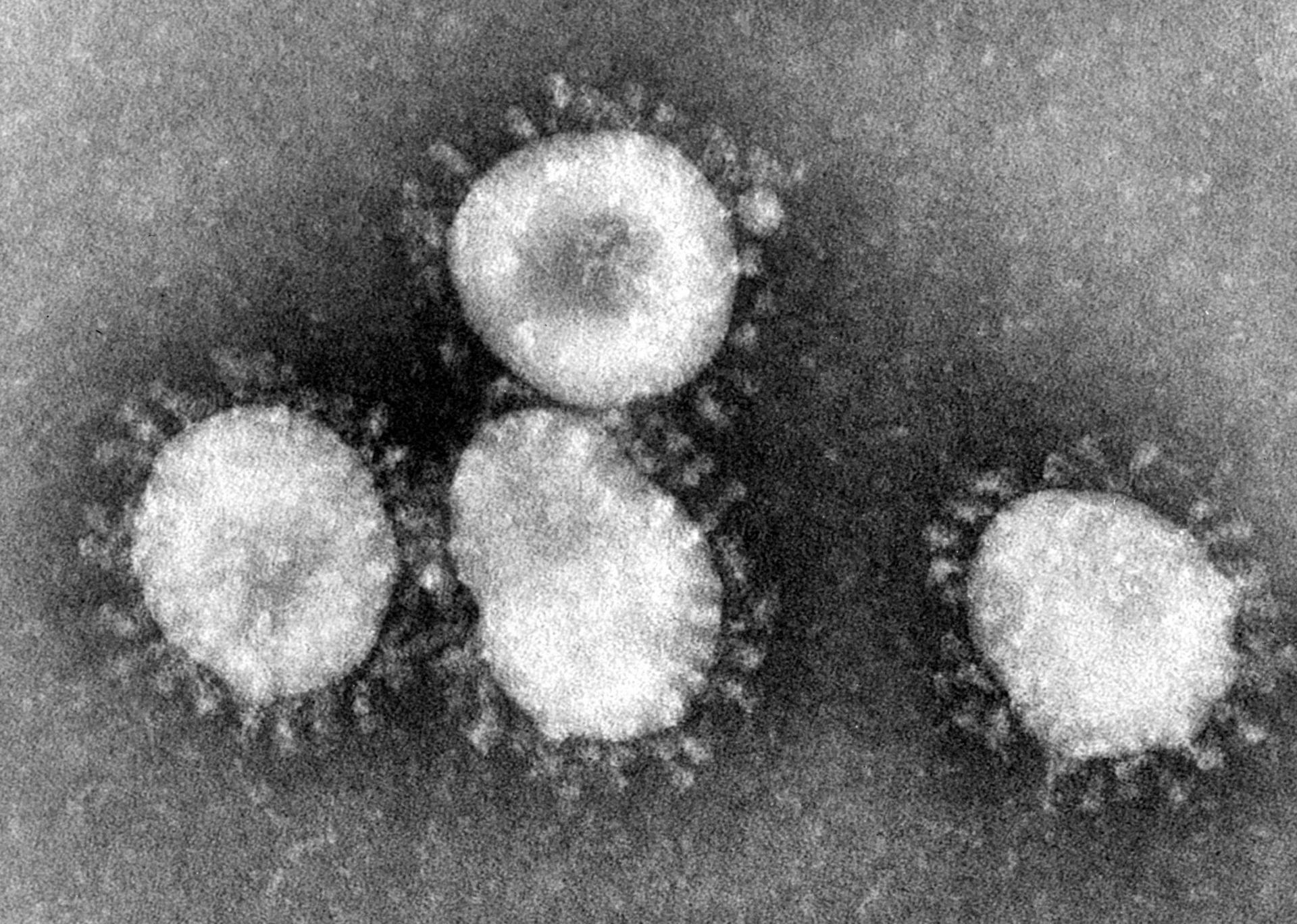
- An outbreak of a new Coronavirus that began in the Chinese city of Wuhan has already killed at least 106 people in China.
- Infections have been confirmed in many other countries. But of the 4,500 people who have so far contracted the virus, the vast majority live in China.
- With crumbling health infrastructure due to an overburden of diseases in the country, India’s preparedness for handling epidemics such as novel coronavirus (nCoV) becomes a major challenge.
- The World Health Organisation has warned that due to human to human transmission, the virus can fast spread in other countries also.
A world pandemic begins with ignorance
- Chinese officials underestimated the severity of the outbreak, even downplaying the mode of infection, and this attitude had an important role in the rapid spread of the disease in the country.
- As India prepares itself against the virus, a similar denial or underplaying of the crisis can have equally serious consequences.
What is the Novel Coronavirus (nCoV?)

- Coronaviruses are large family of viruses, which cause illnesses to people and also circulate in animals including camels, cats and bats.
- They cause illness ranging from the common cold to more severe diseases such as Middle East Respiratory Syndrome (MERS) and Severe Acute Respiratory Syndrome (SARS).
- 2019-nCoV is a new strain that has not been previously identified in humans.
- Human to human transmission has been recently confirmed. However the source remains unknown.
How does it spread?
- Coronaviruses are zoonotic, meaning they are transmitted between animals and people.
- Detailed investigations found that SARS-CoV was transmitted from civet cats to humans and MERS-CoV from dromedary camels to humans.
- Several known coronaviruses are circulating in animals that have not yet infected humans.
Signs and symptoms of Coronavirus
- Coughing
- Fever
- Pneumonia
- Shortness of breath
- Vomiting
- Diarrhea
- In advanced cases, the patient can have very serious complications, which can lead to death, such as: Sever pneumonia, Renal (Kidney) failure
Its’ prevention
- Standard recommendations to prevent infection spread include regular hand washing, covering mouth and nose when coughing and sneezing, thoroughly cooking meat and eggs.
- Avoid close contact with anyone showing symptoms of respiratory illness such as coughing and sneezing.
- WHO also advises that people should avoid close contact with anyone showing symptoms of respiratory illness such as coughing and sneezing.
Why such major outbreaks occur in China only?
- Several deadly new viruses in recent years have emerged in China — Severe Acute Respiratory Syndrome (SARS), bird flu, and now the novel Coronavirus (nCOV).
- The reason could lie in the busy food markets dotting cities across the country — where fruits, vegetables, hairy crabs and butchered meat are often sold next to bamboo rats, snakes, turtles, and palm civets.
- Closely packed stalls in busy marketplaces, the Chinese taste for exotic meats, and the high population density of cities create the conditions for the spread of zoonotic infections.
Impacts of Coronavirus
- For starters, when we have a disease outbreak, the government has to spend a lot of money on diagnosing and treating patients.
- It’s also imperative that it invest in preventive measures i.e. setting up protocols to screen people in high-risk areas, commission studies to understand the virus/epidemic better, coordinate with other countries to contain the outbreak.
Human cost of the outbreak
- When the healthcare infrastructure in your country can’t deal with the crisis effectively, mortality rates shoot up.
- Think, Ebola. Over 11,000 people died in Guinea, Liberia, and Sierra Leone. But that’s not all.
- Because the response team was so ill-equipped, over 150 health care workers perished in the process.
- As the WHO notes — “Every single loss of a doctor or nurse diminishes response capacity significantly” And this further aggravates the crisis.
Skewed production
- China is now one of the largest producers and consumers of a wide range of commodities, including oil, steel, copper, corn, wheat and soybean.
- But considering the country is now in lockdown, there isn’t a whole lot of activity going on here.
- When workers don’t go back to work, you have to leave the smelters and the refineries as is. Productivity suffers, output declines and supply industries are hit hard.
- Countries dependant on China for commodities also take a hit.
Impact on Economy
- When there are such devastating human costs involved, you will see a material impact on the economy almost immediately.
- These are people who participate in the labour force i.e. people who work, earn and spend.
- The eventual loss in productivity because of a sudden collapse of the nation’s workforce doesn’t bode well for anybody.
- All the people desist from visiting public places, the movies, trains etc. The fear of a widespread epidemic can manifest in ways that further erodes confidence in an economy and hurt it in perpetuity.
- We are talking about cancelled tourist trips, a decline in retail trade and an overall sense of doom and gloom surrounding the country.
- Past evidence has shown that consumer spending also goes down dramatically when news of an outbreak spreads.
India steps up vigil
- Thermal screening is being done at seven designated airports—New Delhi, Kolkata, Mumbai, Chennai, Bengaluru, Hyderabad and Kochi.
- The government has set up a 24×7 helpline number to attend to queries about the coronavirus as number of cases rose across the world.
- Anyone seeking information can call on the number 011-23978046,” the Union ministry of health said in a tweet.
- Indian authorities are prepared to evacuate citizens from Hubei Province, China.
India’s limits
- India’s ability to contain an epidemic is far less than that of China.
- Its scientific infrastructure is less advanced and extensive, its ability to quarantine a large number of people non-existent, its hospitals ill-equipped to treat large armies of sick people.
- The only advantage is the knowledge of the Chinese experience, which India can use to limit the spread of the disease.
- If this is true, there may be a large number of infected people spread widely in the Chinese population, and it makes controlling the epidemic far more difficult.
- India’s scientific expertise, despite its depth in pockets, is not broad enough to respond quickly in such situations.
- As the director of the National Institute of Virology said recently, India needs 20 times as many virologists as it has at the moment.
- For a country of 1.3 billion people, India has too few scientists and healthcare professionals to deal with such emergencies.
Is India prepared to face this havoc?
- Current health infrastructure in India paints a dismal picture of healthcare delivery system in the country. Health Infrastructure has been described as the basic support for the delivery of public health activities.
- Public health experts believe that India is ill-equipped to handle such emergencies. It is not prepared to tackle health epidemics, particularly given its urban congestion.
- In fact given the city structure and the way the settlements have grown epidemics once occurs will spread at a galloping rate.
- The slum clusters all around the cities and the unhygienic growth, poor waste disposal system will only aggravate the situation.
Way Forward
- The aerial spread of the newly detected coronavirus poses a threat of rapid dissemination but it can still be contained with an efficient response which combines effective public health, microbiological, clinical and communication responses.
- While our laboratory network has improved after the H1N1 scare, much needs to be done to improve the community facing primary health services and risk communication to the public.
- In general, hospital services can quickly gear up to treat severe cases in urban areas but rural healthcare needs a step up.
- Kerala’s success in responding swiftly and smartly to the Nipah outbreak should be a role model to other states.
- Effective risk communication to the general public needs to be circulated to prevent panic and provide advice on precautionary measures.
- Central and state health agencies must act in tandem. The media too must helping in increasing awareness without triggering panic.
Conclusion
- Capacity to contain a virus outbreak depends on the ability to identify cases and contacts in the community on clinical criteria while ensuring smart surveillance on inward travellers; isolate and identify the causative virus; treat severe cases while counselling mild cases.
- India’s healthcare system is too small for such a large population.
- Dealing with pandemics would require a multi-pronged approach, ranging from mathematical analysis to the ability to rapidly develop drugs and vaccines.
References
https://www.civilsdaily.com/news/pib-novel-corona-virus-ncov/
